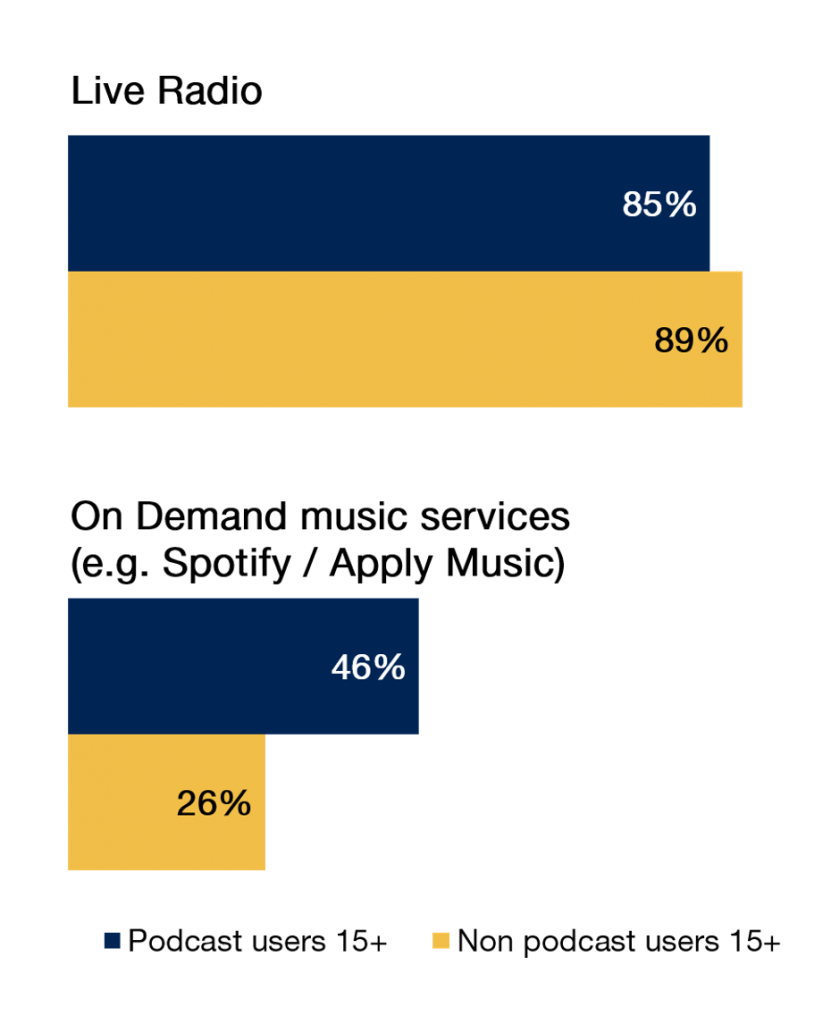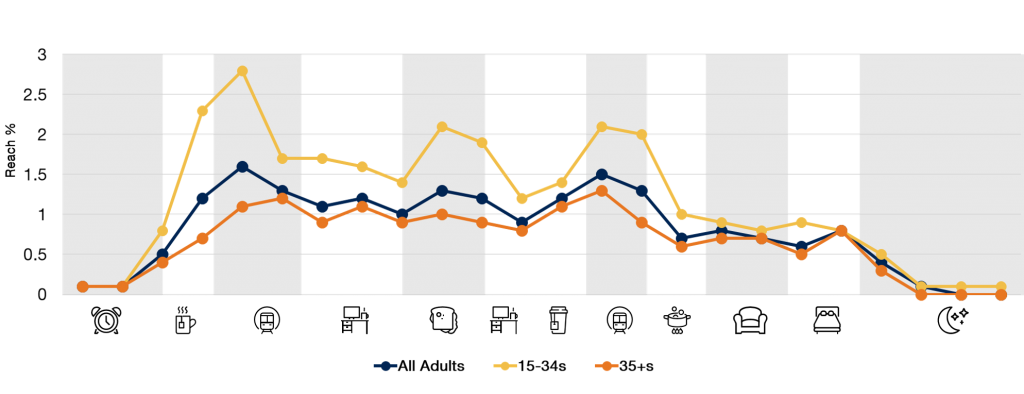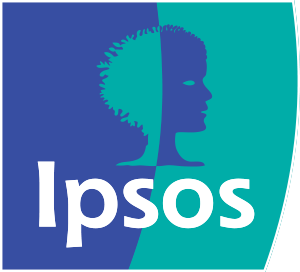Author: Samara Vasconcelos Cunha
With so many media choices available to us, including both live and on demand options, the way people consume media is rapidly changing. In my case, as a female in her early 30s living in London (but originally from Brazil), my own media day starts when I leave my flat to take the train into central London.
After scanning the news headlines and checking social media, I usually like to check out what is going on in Brazil. My personal preference is for in depth political commentary. So, I was pleased to discover a podcast1 called Café da Manhã, which in English means “Breakfast”.
As the name suggests, it feeds me with what I need to know about my country in about 20 minutes – roughly the duration of my commute. Personally, I like the idea and the format of podcasts and now listen to at least ten on a regular basis.4
9.4 million people in the UK now listen to podcasts every week
A growing opportunity
This is how I got hooked on podcasts, and I am not the only one. Around 9.4 million people in the UK now listen to podcasts every week, an increase of 45% in the last year.2 Although they only represent a small share of listening, the popularity of podcasts is growing.
Measuring podcasting can be tricky, as podcasts: can attract small audiences, are available on multiple platforms, and can be listened to across different devices. The main method traditionally employed by Ipsos and others in the UK is asking people to complete listening diaries (on paper or online) to track behaviour over a seven-day period.
Asking people to recall behaviour is never perfect, as people can forget or misattribute what they have heard, especially if the behaviour is atypical or irregular. Nevertheless, because podcast listeners tend by the very nature of the medium to be loyal and attentive, this may be less of a problem than for more general behaviour.
At Ipsos, we have been exploring the continued growth in podcast listening by means of listening diaries for MIDAS (RAJAR’s audio survey) and the BBC.3 For both online diaries, we make sure targeting methods are sophisticated so we can provide a high-quality sample of hard-to-reach groups, such as podcast listeners. For the BBC specifically, we integrate the diary with our passive measurement technique to provide a full picture of audience behaviour that overcomes most measurement challenges.
Chart 1: Podcast reach has increased since 2012 along with On Demand Music Services

Consuming more audio content
We have been tracking podcast penetration in MIDAS across the UK population since 2012. Chart 1 demonstrates how podcast reach has increased over time along with on demand music services. Chart 2 shows that podcast listeners consume large amounts of audio content. While they listen to less live radio than non-podcast listeners, they do engage more than non-listeners in on demand music services, giving them a larger audio repertoire.4
MIDAS also shows us that the podcast format is good for accessing audio content on-the-go, which is why 71% of podcast/download listening hours happen on a smartphone.5 Therefore, in chart 3, it’s not surprising to see four peaks during occasions where podcast listening happens on the move: in the mornings, while travelling/driving, at lunchtime, and again in the evenings while travelling/relaxing. Indeed, 30% of podcast listening happens when driving/travelling, and 18% when relaxing.6
Who’s listening?
We see that usage varies markedly by age group, social class and region. For example, according to our work with the BBC7, 16% of 16-34-year-old internet users listen to podcasts at least once a week for an average of 38 minutes a day, compared to just 6% of people aged 35+ (whose average listening time drops to 19 minutes a day). Those from higher social grades are also more avid podcast listeners; 12% of ABC1 adults listen every week compared to just 5% of C2DEs. Londoners show the highest levels of usage, with 23% listening every week driven, no doubt, by longer commuting journeys.
In my own experience, the popularity of podcasts is due to the way they connect to their audiences. They are particularly good for immersing listeners in topics or content at times that suit the listener. According to MIDAS, 59% of podcast listeners listen to the entire audio episode, and 62% listen to all/most of the
episodes they download, suggesting captive and loyal audiences.8
The podcast genres that people listen to tend to be diverse, so any ranking of titles in the UK can vary almost daily. However, we do have a taste of the main genres from our work with the BBC, with the most popular being: real-life stories, comedies, hobbies, facts, history and movies.9
Chart 2: Podcasts users overlap consumption with live radio and on demand services

All adults 15+ who do not listen to podcasts/downloads (1,864) Source: MIDAS Winter 2019
Some podcasts are specifically related to daily life, such as parenthood, relationships and expert opinions, for example, ‘My Dad Wrote a Porno’, ‘Sh***ged Married Annoyed’, ‘No Such Things as A Fish’ and ‘Off Menu’, have a successful format. This is what makes podcasts so powerful: they relate closely to peoples’ interests and daily concerns. It also proves that the audio experience is not all about music. Podcasts started out to strengthen the radio offer by providing an ‘on-demand’ alternative for non-music content and to showcase some of the other strengths of the audio experience.
Chart 3: Podcast/downloads timeline in an average weekday

It also proves that the audio experience is not all about music
There is a strong propensity for podcasts to be consumed alone as opposed to a shared listening experience. MIDAS shows us that 89% of podcast sessions are a solo activity.10 Indeed, when I listen to my list of favourite podcasts it is in a moment when I want to zone out, relax and immerse myself in the content I am listening to. Despite smaller audiences, podcasts provide a valuable opportunity for broadcasters and advertisers to reach dedicated listeners with specific interests. For instance, a broadcaster that is trying to promote a new sci-fi TV series might choose to take up advertising during a similarly themed podcast, so that they know they are reaching an audience their content will resonate with and consequently provide a more effective brand impact due to contextualisation.
As experts in audience measurement, we can see that the growing popularity of podcasts mirrors the growth of on-demand video, driven by its popularity within younger age cohorts, but appealing to anyone looking for diverse content accessed at a time that suits them. The ability to reach dedicated listeners with specific interests is a valuable opportunity, and our expertise in podcast measurement can help ensure brands and advertisers are able to act appropriately. It could be that many more people, once bitten, could be as smitten as I am by the allure of on-demand audio services like Café da Manhã.
- The word ‘Podcast’ was coined in 2004 by a journalist, blending the words ‘iPod’ and
‘Broadcast’ into one. - All adults 15+ (2,320) Source: MIDAS Winter 2019. All adults 15+ (2,323) Source: MIDAS
Winter 2018 - Where the BBC is mentioned we are referring to Compass, the BBC’s cross-media
measurement solution that combines diary and passive elements. - All adults 15+ who listen to podcasts/downloads (456) Source: MIDAS Winter 2019
- All adults 15+ (2,320) Source: MIDAS Winter 2019
- All adults 15+ (2,320); 15-34 (771); 35+ (1,549) Source: MIDAS Winter 2019
- Base: All adults 16+ (3,487); 16-34 (628); 35+ (2,859); ABC1 (2,285), C2DE (1,202), London (394) Source: CMM Diary Aug-Dec 2019
- All adults 15+ who listen to podcasts/downloads (456) in the survey week. Source: MIDAS Winter 2019
- Base: All adults 16+ (3,487) Source: CMM Diary Aug-Dec 2019
- All adults 15+ who listen to podcasts/downloads (456) Source: MIDAS Winter 2019

